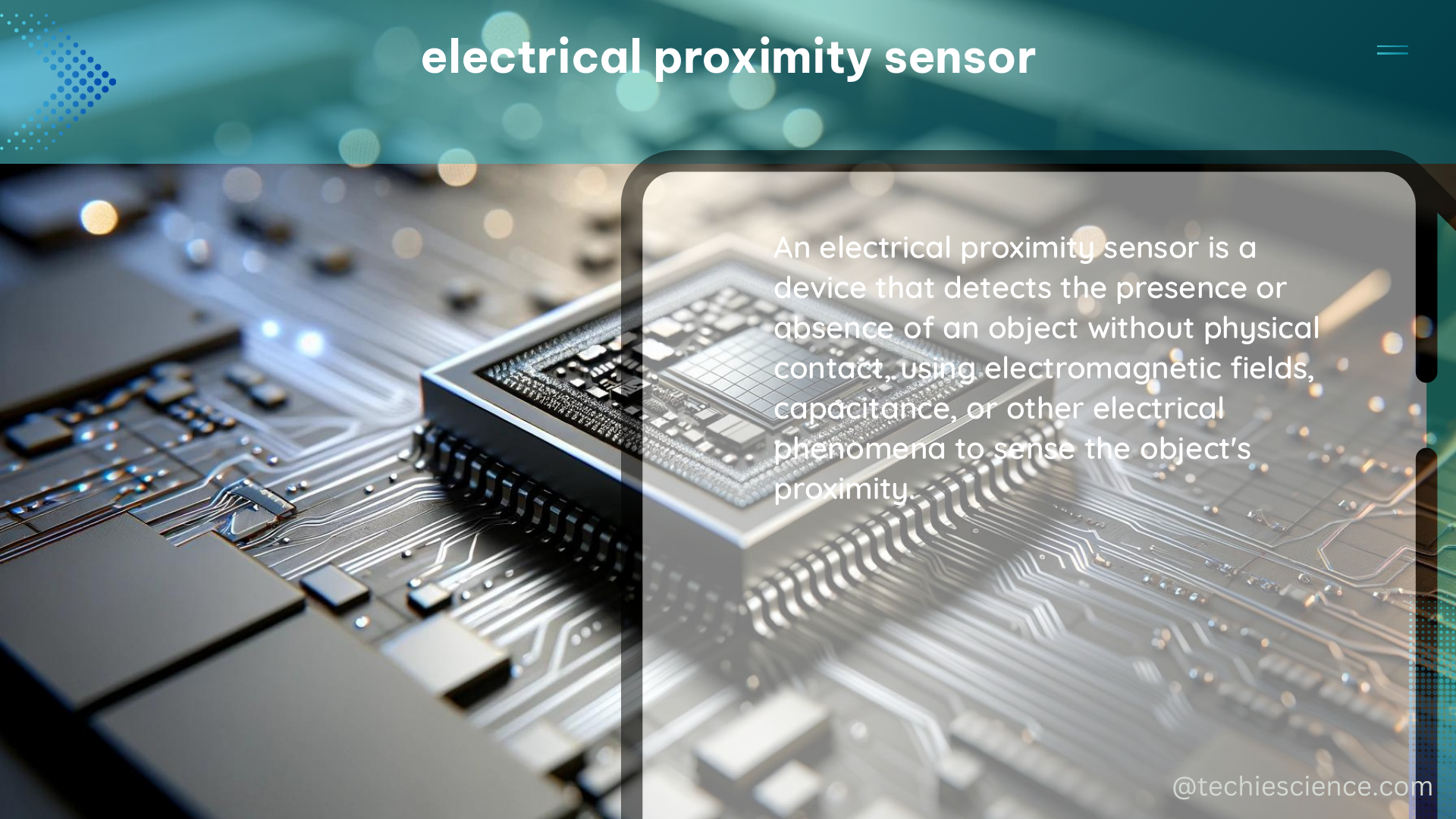Electrical proximity sensors are versatile devices that can detect the presence or absence of an object without physical contact. These sensors work by emitting an electromagnetic field or a beam of electromagnetic radiation and then sensing the reflections or changes in the field or beam caused by the presence of an object. This technology has a wide range of applications, from industrial automation to robotics and beyond.
Understanding the Operating Principles of Electrical Proximity Sensors
Electrical proximity sensors can operate on various principles, each with its own advantages and disadvantages. The most common types include:
-
Inductive Proximity Sensors: These sensors use an electromagnetic field to detect the presence of metal objects. They are known for their high reliability, long service life, and resistance to harsh environments.
-
Capacitive Proximity Sensors: These sensors detect the changes in the electric field caused by the presence of an object, which can be made of various materials, including metal, plastic, and even human skin.
-
Ultrasonic Proximity Sensors: These sensors use high-frequency sound waves to detect the presence and distance of objects. They are particularly useful for detecting non-metallic objects and can operate in a wide range of environmental conditions.
-
Photoelectric Proximity Sensors: These sensors use light, typically infrared or visible, to detect the presence of an object. They can be further classified into different types, such as through-beam, reflective, and diffuse sensors, depending on the specific application.
Key Specifications and Performance Metrics

When selecting an electrical proximity sensor, it’s important to consider the following technical specifications and performance metrics:
| Specification | Description |
|---|---|
| Operating Principle | The underlying technology used by the sensor, such as inductive, capacitive, or ultrasonic. |
| Sensing Range | The distance over which the sensor can reliably detect an object. |
| Output Signal | The type of output signal the sensor provides, which can be analog or digital. |
| Response Time | The time it takes for the sensor to detect an object and output a signal. |
| Temperature Range | The range of temperatures over which the sensor can operate without compromising its performance. |
| Environmental Conditions | The sensor’s resistance to factors such as moisture, vibration, and electromagnetic interference. |
In addition to these specifications, it’s also important to consider the sensor’s performance metrics, which include:
- Sensitivity: The minimum detectable change in the sensed quantity.
- Resolution: The smallest change in the sensed quantity that can be detected.
- Accuracy: The closeness of the sensor’s output to the true value of the sensed quantity.
- Precision: The consistency of the sensor’s output over multiple measurements.
- Linearity: The degree to which the sensor’s output is proportional to the sensed quantity.
- Hysteresis: The difference in the sensor’s output for increasing and decreasing values of the sensed quantity.
- Repeatability: The ability of the sensor to produce the same output for the same value of the sensed quantity.
To give you a better understanding of the performance of electrical proximity sensors, here are some example specifications from commercially available sensors:
- Sensitivity: 10 mV/V (for a 5 VDC supply voltage)
- Resolution: 0.1 mV/V (for a 5 VDC supply voltage)
- Accuracy: ±1% of full scale
- Precision: ±0.1% of full scale
- Linearity: ±0.5% of full scale
- Hysteresis: ±0.25% of full scale
- Repeatability: ±0.1% of full scale
DIY Electrical Proximity Sensor Projects
If you’re interested in building your own electrical proximity sensors, there are many resources available online. Here are a few examples of DIY projects you can try:
-
Inductive Proximity Sensor: Use a coil of wire and an Arduino microcontroller to build a simple inductive proximity sensor that can detect the presence of metal objects.
-
Ultrasonic Distance Sensor: Combine an ultrasonic transducer and an Arduino microcontroller to create a distance sensor that can measure the distance to an object.
-
Capacitive Touch Sensor: Construct a capacitive touch sensor using a conductive material, such as copper foil, and an Arduino microcontroller to detect the presence of a human touch.
These DIY projects can be a great way to learn about the underlying principles of electrical proximity sensors and how to use them in practical applications. By experimenting with different sensor types and building your own prototypes, you can gain a deeper understanding of the technology and explore its potential for your own projects.
Conclusion
Electrical proximity sensors are versatile and powerful tools that can be used in a wide range of applications, from industrial automation to robotics and beyond. By understanding the operating principles, key specifications, and performance metrics of these sensors, you can select the right sensor for your needs and even explore the world of DIY sensor projects. Whether you’re a professional engineer or a hobbyist, electrical proximity sensors offer a wealth of opportunities for innovation and exploration.
References:
- Sensors for daily life: A review – ScienceDirect.com
- A Review on Biosensors and Recent Development of Nanostructured Materials-Enabled Biosensors – MDPI
- Biosensors and their widespread impact on human health – Sciencedirect.com
- Sensing and Sensor Fundamentals – SpringerLink
- Human Factors Considerations for Quantifiable Human States in Physical Human-Robot Interaction – NCBI

The lambdageeks.com Core SME Team is a group of experienced subject matter experts from diverse scientific and technical fields including Physics, Chemistry, Technology,Electronics & Electrical Engineering, Automotive, Mechanical Engineering. Our team collaborates to create high-quality, well-researched articles on a wide range of science and technology topics for the lambdageeks.com website.
All Our Senior SME are having more than 7 Years of experience in the respective fields . They are either Working Industry Professionals or assocaited With different Universities. Refer Our Authors Page to get to know About our Core SMEs.